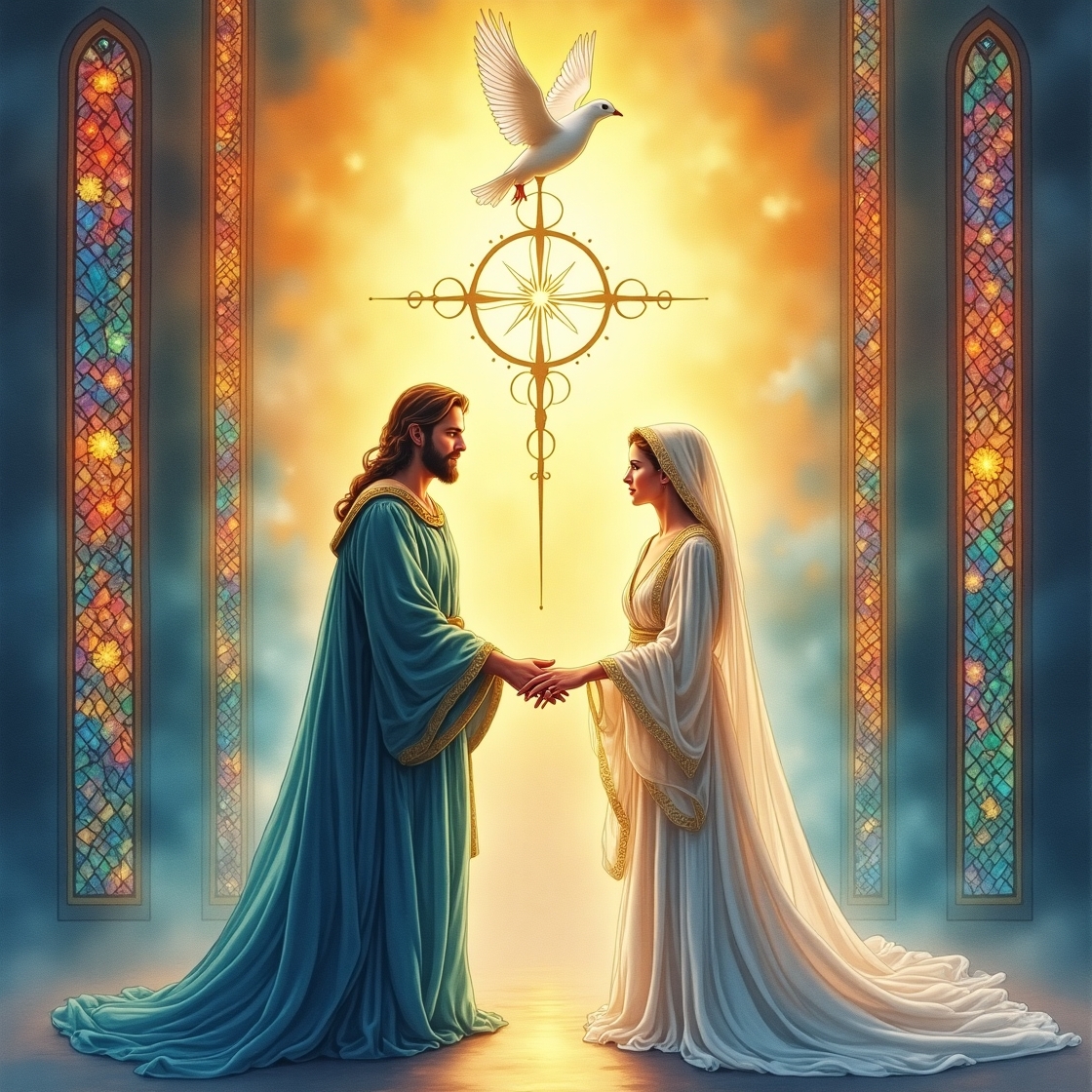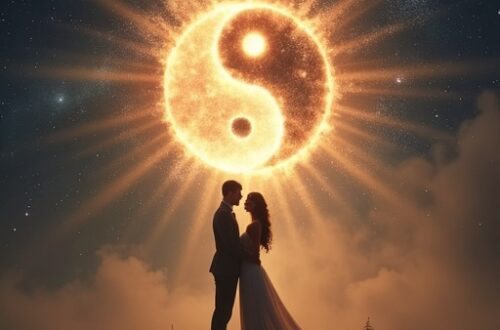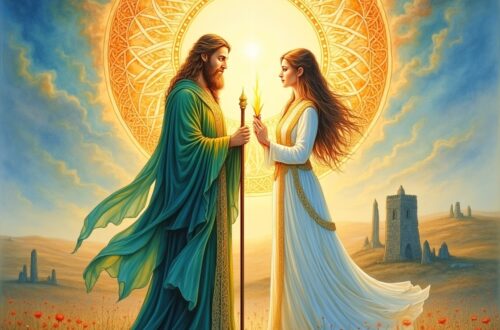
Romeo & Juliet: An Esoteric Christian Lens on the Divine Masculine and Feminine
In the tapestry of Shakespeare’s Romeo and Juliet, many see only the tragic outline of star-crossed lovers. Yet, beneath the familiar surface, the play pulses with archetypal energies—the divine masculine and feminine—woven through the esoteric traditions of Christianity. To read Romeo and Juliet through this sacred lens is to witness not just a doomed romance, but a cosmic drama of union, sacrifice, and spiritual renewal.
The Sacred Marriage: Alchemy of Opposites
At the heart of esoteric Christianity lies the myth of the Sacred Marriage: the hieros gamos, the mystical union of masculine and feminine principles. In Gnostic lore, this is the reunion of Christ (the Logos, divine masculine) and Sophia (the fallen Wisdom, divine feminine), whose separation and longing shape the cosmos. In Romeo and Juliet, the lovers become living symbols of these polarities, their passion a microcosm of the soul’s yearning for wholeness.
The Montagues and Capulets, locked in ancient feud, represent the divided world—the sundered psyche, the duality of spirit and matter. Romeo and Juliet’s love is a force of reconciliation, a sacred flame that seeks to bridge the chasm. Their union, forbidden and fraught, mirrors the soul’s journey to reunite with its divine counterpart, despite the world’s resistance.
Religious Imagery: Love as Liturgy
Shakespeare drenches the lovers’ encounters in religious language. Their first meeting is a sonnet, a prayerful exchange of pilgrim and saint. Romeo calls Juliet “the sun,” the radiant Sophia, while Juliet names Romeo “the god of my idolatry.” Their kisses are sacraments, their bodies holy shrines. In these moments, the play transcends mere romance; it becomes a liturgy of love, a new gospel where eros and agape intertwine.
This “religion of love” is not sanctioned by the church or the city. It is heretical, subversive, and yet deeply sacred. The lovers create their own sanctuary in the night, away from the laws and rituals of Verona. Their clandestine marriage is a mystical rite, echoing the secret initiations of the ancient mysteries.
Gender, Integration, and the Inner Marriage
In the dance of Romeo and Juliet, traditional gender roles blur and invert. Romeo, sensitive and intuitive, embodies qualities often coded as feminine. Juliet, decisive and courageous, wields the sword of reason. Their love is not a merging of opposites, but a mutual awakening—each calling forth the hidden divine within the other.
This is the “inner marriage” of esoteric tradition: the integration of anima and animus, yin and yang, within the soul. The tragedy is not just the world’s refusal to accept their union, but the failure of the collective psyche to embrace its own wholeness.
Sacrifice and Transcendence: The Alchemy of Death
As the drama unfolds, eros transforms into agape. The lovers’ willingness to die for each other is not mere adolescent folly, but a sacred offering—a reenactment of the Christian mystery of death and resurrection. Their sacrifice breaks the curse of division, reconciling their families and, symbolically, the sundered halves of the human soul.
In esoteric Christianity, true union is found not in possession, but in surrender; not in clinging to life, but in passing through death to new birth. Romeo and Juliet’s love, consummated in the tomb, becomes the seed of a new beginning—a mystical marriage that transcends time and flesh.
Conclusion: The Alchemy of Love
To read Romeo and Juliet through the esoteric Christian lens is to see beyond tragedy into transformation. The play becomes a parable of the divine masculine and feminine, a call to the sacred marriage within and without. In their brief, blazing union, Romeo and Juliet embody the soul’s deepest longing: to be whole, to be one, to be love incarnate.
Let us remember their story not as a warning, but as an invitation—to seek the divine beloved, to reconcile the opposites within, and to become, in our own lives, the alchemists of love’s sacred fire.



